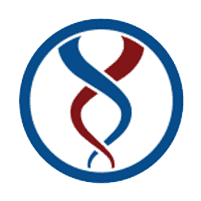Endovenous Laser Ablation

Acadiana Vascular Clinic:
Vein Center of Louisiana
Lafayette, LA

Acadiana Vascular Clinic:
Vein Center of Louisiana
Lafayette, LA
Endovenous Laser Ablation
Endovenous laser ablation (EVLA), also known as endovenous laser treatment (EVLT), is a minimally invasive, non-surgical treatment for varicose veins and chronic venous insufficiency. The procedure uses laser energy to heat and collapse the affected veins, rerouting blood flow to healthier veins and alleviating symptoms associated with venous insufficiency. EVLA has become a popular alternative to traditional surgical treatments like vein stripping and ligation due to its lower complication rates, minimal scarring, and quicker recovery time.
The process of endovenous laser ablation typically involves the following steps:
Preparation: The patient is placed in a comfortable position, and the treatment area is cleaned and sterilized. Local anesthesia or tumescent anesthesia (a mixture of local anesthetic and saline solution) is used to numb the area and minimize discomfort during the procedure.
Ultrasound guidance: A healthcare professional, usually a vascular specialist or interventional radiologist, uses ultrasound imaging to locate the affected vein and map out the treatment plan.
Access: A small incision or needle puncture is made near the affected vein, usually around the knee or in the lower leg. A guidewire is inserted into the vein, followed by a catheter with a laser fiber at its tip. The catheter and laser fiber are advanced along the vein, guided by real-time ultrasound imaging.
Laser ablation: Once the laser fiber is in position, laser energy is delivered in short pulses, heating the vein’s interior walls. This heat causes the vein to shrink, collapse, and eventually seal shut. The laser energy is carefully controlled to minimize damage to surrounding tissues.
Completion: After the vein has been treated, the laser fiber and catheter are removed, and the incision site is closed with a small bandage. Compression stockings or bandages are applied to the leg to promote healing, reduce swelling, and minimize the risk of complications.
Patients can generally walk and resume most normal activities immediately after the procedure, although strenuous activities should be avoided for a period of time as recommended by the healthcare professional. Endovenous laser ablation has a high success rate and is considered a safe and effective treatment option for varicose veins and venous insufficiency, offering both symptom relief and cosmetic improvement.
REQUEST
APPOINTMENT
